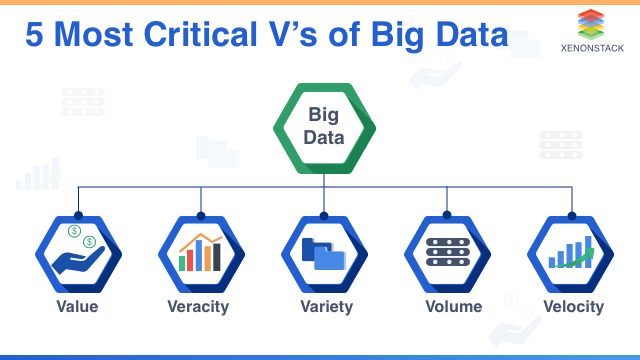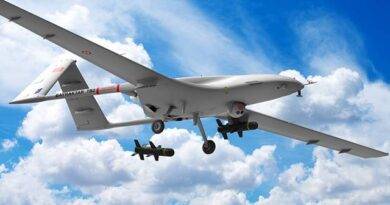What is Big Data? Key Elements and Its Role in the Aviation Environment
Big Data has transformed various industries, including aviation. It offers a competitive advantage by enabling data-driven decisions. But what exactly is Big Data? How does it apply to aviation? This article explores the concept of Big Data, its core elements, and its applications in the aviation sector.
What is Big Data?
Big Data refers to extremely large datasets that are complex, dynamic, and challenging to process using traditional data management tools. These datasets are characterized by their volume, velocity, and variety, making them difficult to store, analyze, and visualize. In recent years, advancements in storage and computational power have made it possible to harness the potential of Big Data.
Characteristics of Big Data
Big Data is defined by several “V” characteristics:
- Volume: The sheer size of data generated, often measured in terabytes or petabytes. In aviation, data sources like flight records, passenger information, and sensor readings contribute to the high volume.
- Velocity: The speed at which new data is generated and processed. Real-time data flows, such as air traffic control communications and weather updates, require rapid analysis.
- Variety: Data comes in multiple formats, including structured, unstructured, and semi-structured data. This includes text from maintenance logs, images, and audio recordings from cockpit interactions.
- Veracity: The trustworthiness of data. Ensuring accuracy is critical in aviation, where data errors could lead to safety risks.
- Value: The actionable insights derived from Big Data. Value generation is a key goal for utilizing Big Data in aviation to optimize operations and enhance safety.

Key Elements of Big Data
To effectively use Big Data, organizations must understand its core elements:
1. Data Sources
Big Data depends on diverse data sources. In aviation, data comes from:
- Flight sensors: Collect information like engine performance, altitude, and speed.
- Airline management systems: Record passenger bookings, baggage information, and customer feedback.
- Air Traffic Control (ATC): Monitors aircraft positions, air routes, and weather patterns.
- Maintenance logs: Track aircraft condition and service records.
2. Data Storage
Storing large datasets requires scalable storage solutions. These include:
- Cloud storage: Provides scalability and flexibility for storing vast amounts of aviation data.
- Data lakes: Store raw data from various sources in a centralized repository, enabling easier access for analysis.
- Relational databases: Useful for structured data, like passenger information and maintenance schedules.
3. Data Processing
Processing data at speed is vital for extracting meaningful insights. Methods include:
- Batch processing: Analyzing large volumes of historical data over a set time period.
- Real-time processing: Crucial for analyzing live data streams like air traffic control communications and sensor data.
4. Data Analysis
Data analysis methods allow insights extraction. Common techniques include:
- Predictive analytics: Forecasts future events like aircraft maintenance needs.
- Machine learning: Improves pattern recognition in large datasets, such as identifying inefficiencies in fuel consumption.
- Natural language processing (NLP): Analyzes unstructured data, like maintenance logs, to identify recurring issues.
5. Data Visualization
Visualization tools help simplify complex data, making insights accessible. Examples include:
- Dashboards: Monitor key performance indicators (KPIs) like on-time performance and fuel usage.
- Geospatial analysis: Maps real-time aircraft positions and air traffic flow.
- Heat maps: Identify areas of frequent delays or high traffic congestion.
Applications of Big Data in Aviation
Big Data plays a critical role in enhancing efficiency, safety, and customer satisfaction within the aviation industry. Here’s how:
1. Predictive Maintenance
Airlines can analyze sensor data from aircraft to predict potential failures before they occur. This reduces unscheduled maintenance and minimizes downtime. For example, engine performance data can help identify early signs of wear and tear, allowing maintenance teams to address issues before they escalate.
2. Optimizing Flight Operations
By analyzing flight data, airlines can optimize routes for fuel efficiency and reduce delays. Big Data allows for real-time adjustments based on weather conditions, air traffic, and other factors. Airlines can also track flight performance and make data-driven decisions to improve on-time arrivals.
3. Enhancing Customer Experience
Big Data helps airlines personalize customer experiences. By analyzing booking patterns and customer preferences, airlines can tailor offers and services. For instance, frequent flyer data can be used to provide targeted promotions or seating preferences, improving passenger satisfaction.
4. Air Traffic Management (ATM)
Big Data is crucial for managing complex airspace environments. It allows real-time monitoring of air traffic, predicting congestion, and adjusting flight paths. This improves air traffic flow and enhances safety. With Big Data, controllers can make better decisions on spacing and sequencing of flights, reducing the risk of collisions.
5. Weather Forecasting
Accurate weather data is vital for safe flight operations. Big Data enables the analysis of historical and real-time weather data, providing precise forecasts. This helps airlines optimize flight paths, avoid turbulence, and ensure smoother operations. Weather predictions can also aid ground operations, such as de-icing procedures and scheduling.
Challenges of Using Big Data in Aviation
Despite its benefits, Big Data comes with challenges in aviation:
- Data Integration: Combining data from various sources like ATC systems, weather services, and airline databases can be difficult.
- Data Security: Handling sensitive data, such as passenger information, requires strict compliance with data protection laws.
- Data Quality: Ensuring the accuracy of real-time data streams is crucial for decision-making. Inaccurate data can lead to operational risks.
Conclusion
Big Data has become a cornerstone of modern aviation, offering a wealth of opportunities for efficiency and safety improvements. From predictive maintenance to optimizing customer experience, it enables data-driven strategies that make air travel safer and more efficient. However, leveraging Big Data requires overcoming challenges like data integration and security. By addressing these challenges, the aviation industry can continue to unlock the full potential of Big Data.
In conclusion, understanding the key elements of Big Data—data sources, storage, processing, analysis, and visualization—allows aviation stakeholders to make smarter decisions. This data-driven approach not only improves operational efficiency but also ensures a better and safer flying experience for passengers.


